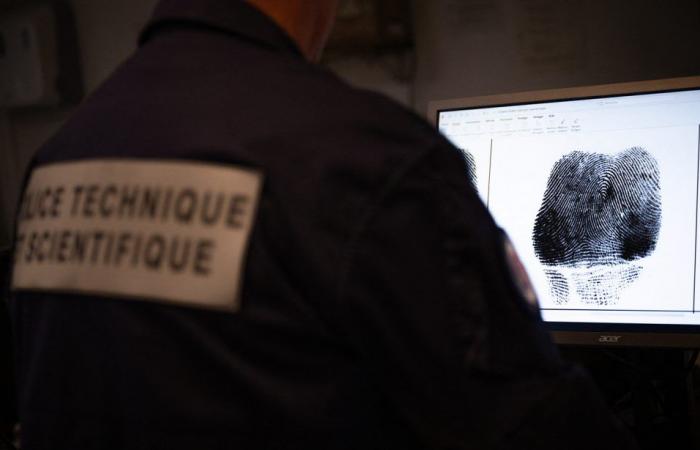
After months of investigation, DNA analysis and viewing of video surveillance images, investigators managed to find the body of Lina – a teenager who disappeared in September 2023 in Plaine (Bas-Rhin). Does this mean that new technology, combined with artificial intelligence, could make it possible to resolve all cold cases? Interview with General François Daoust, director of the National Gendarmerie Research Center.
After more than a year of research, DNA analysis and viewing of video surveillance images, investigators found, on Wednesday October 16, the body of Lina – a teenager who disappeared in September 2023 in Plaine (Bas-Rhin). His remains were found 500 kilometers away in Nièvre.
It was thanks to the geolocation service, making it possible to trace the route of a car in which the young woman’s DNA was found, that the investigators ended up discovering the location of the body. DNA analyses, video surveillance images, artificial intelligence… Ultimately, will the new technology make it possible to resolve all cold cases? Interview with General François Daoust, director of the National Gendarmerie Research Center and author of Technical and scientific police: The shock of the future (Editions du Rocher, 2024).
Marianne : Lina’s body was discovered largely thanks to the development of new technologies used by forensics and investigators. Can we therefore say that we are witnessing the end of cold cases?
François Daoust: Today, we are witnessing the end of old-style cold cases – those for which the conservation of seals, particularly DNA, did not yet exist. On the other hand, cases will persist, like that of Chevaline, where the investigators have traces but where the little piece of string which will allow the ball to be unrolled is missing.
As a reminder, in this case dating from 2012 and taken up by the cold case center of Nanterre, a British man of Iraqi origin, Saad al-Hilli, his wife and his mother-in-law were found dead in their car, killed by several bullets in the head, on a country road near Chevaline [Haute-Savoie]. A cyclist from the region, Sylvain Mollier, was also shot dead.
Today, investigators are trying to see, with the same clues as at the time, if they had not missed something. In 2012, we had already searched in all directions: the origin of the al-Hilli family, that of the cyclist, the collateral, local and foreign interests… and, one after the other, all the doors closed. We have traces, notably DNA, but which do not correspond to anything since the killer is not registered in the national file. In fact, we have a lot of information, and yet science cannot resolve the matter.
READ ALSO: A mysterious rapist who raged from Antibes to Hauts-de-Seine in the sights of the “cold case” pole
On the other hand, the Lina affair shows that, based on a few clues, the investigators managed to trace the vehicle, and thus, find the body of the young woman. As a reminder, the only traces we had were digital: video images of several hundred vehicles, thousands of boundaries to study… For the gendarmes, it took weeks of expertise to view the images and process all the raw data boundary. But all this could have been much more effective…
Comment ?
In France, we have all the means to facilitate the resolution of certain criminal cases, provided that we release all the obstacles surrounding the use of artificial intelligence (AI) for the processing of files and data collected during of a legal case.
For example, in the Lina case, we could have implemented AI for automated data processing and searching for all vehicles. This would have made it possible to know who owns this or that car, if one has been reported as having been stolen… And it would have saved the police all these weeks of viewing.
Another example: nearly 600,000 people are registered in the wanted persons file, 90% of whom are wanted for misdemeanors and crimes. However, it is still completely prohibited to install AI on all the cameras in cities to run constantly and launch an alert in the event of facial recognition of a person who is wanted.
READ ALSO: In France, 300 “cold cases”, how many serial killers?
Individual freedom is opposed to this type of method. I would like to remind you that article 2 of the Declaration of Man and Citizen states that security is a fundamental right that we owe to each citizen above all others. I am in favor of individual freedom, but not when it goes against the victims and the citizen who must be protected.
Especially since we have the means to ensure that there is no abuse. Let’s take the example of the national genetic fingerprint file, which is supervised by a control approval commission headed by a senior magistrate, himself surrounded by a team. Furthermore, anyone seeking to consult this file must have the reference to a legal case relating to it.
What can artificial intelligence bring to forensic work?
We can clearly see that there is a future for AI in forensic science. Currently, the Criminal Research Institute of the National Gendarmerie (IRCGN) is carrying out work on artificial intelligence that would make it possible to search for human cells on tissues. We know that AI, in the context of medical imaging, is very efficient and precise in identifying cells that are not detectable to the human eye. By starting with such a program – and rather than looking for cells on a sheet or clothing under a microscope, millimeter by millimeter, for weeks in the hope of extracting DNA – we will be able to entrust this research to an AI which will be programmed to recognize the cell.
Furthermore, on a crime scene in a house where there are many connected objects (home automation, fridge, cushion, watch, etc.), we will have data on the entries and exits of each person. Including AI would make it possible to extract all the data from these devices and process it into actionable clues.
On the ground, what advances have been made possible by new technologies?
With the research center, we are working on fleets of drones which would work on different wavelengths (infrared, temperature differences, etc.). Thus, these drones will be able to carry out much finer analyzes and routes than helicopters, for example. It is also more effective than a group of police or volunteers on the ground who could pass by a person’s body. This has actually happened several times in my career.
READ ALSO: The mysterious execution of the retiree from Sarcelles, a cumbersome “cold case”
When it comes to drone clouds, with AI, we can program them at different heights and with different wavelength settings. Thus, meter by meter and in a few hours, the land is completely raked.
In the media, we are talking more and more about 3D laser scanners, which are very useful for forensic science. What is this technology?
In fact, we are talking more and more about this technology because we are seeing the results. But in reality, it has been around for around twenty years and has been used in many cases. The 3D laser scanner makes it possible to visualize shooting distances, the positioning of people and material elements on a crime scene. In two or three hours, for example, we obtain the reconstruction of a house in which we can walk around as if we were really inside.
The 3D laser scanner was notably used in the context of a bus accident in Haute-Savoie. The vehicle got stuck on the level crossing. Six children and a teacher were killed after being hit by the train. We carried out the complete reconstruction with the 3D laser in order to know the distances and speeds of the train. The technology also made it possible to determine the position in which the train driver could be and especially whether he was able to see the bus early enough to brake.





